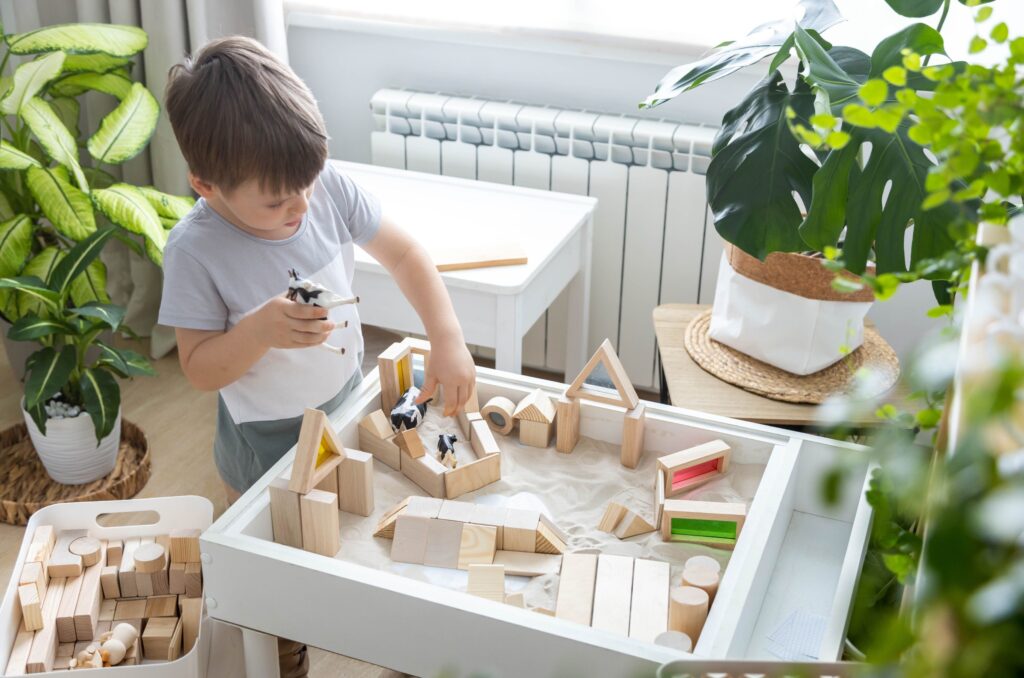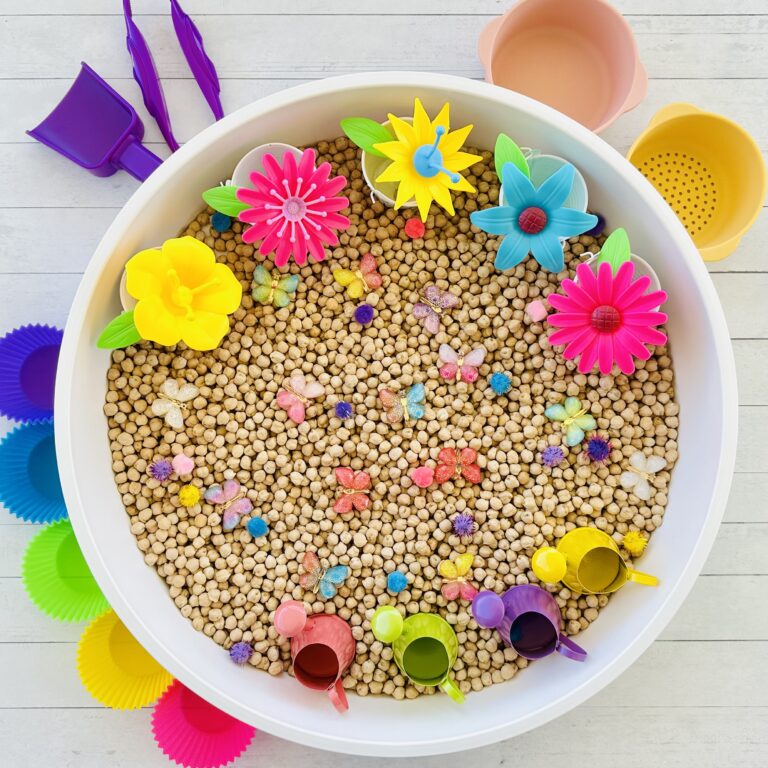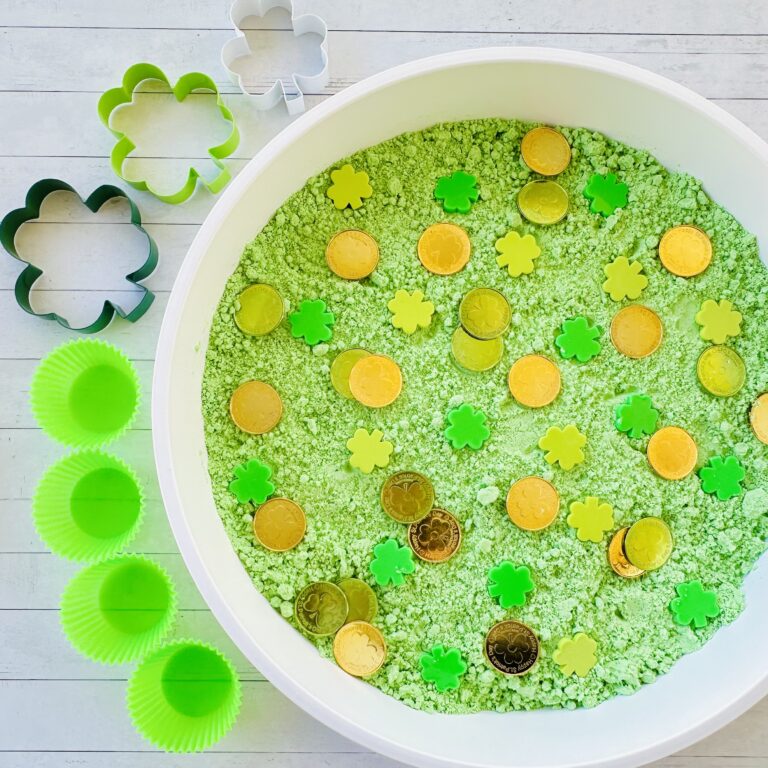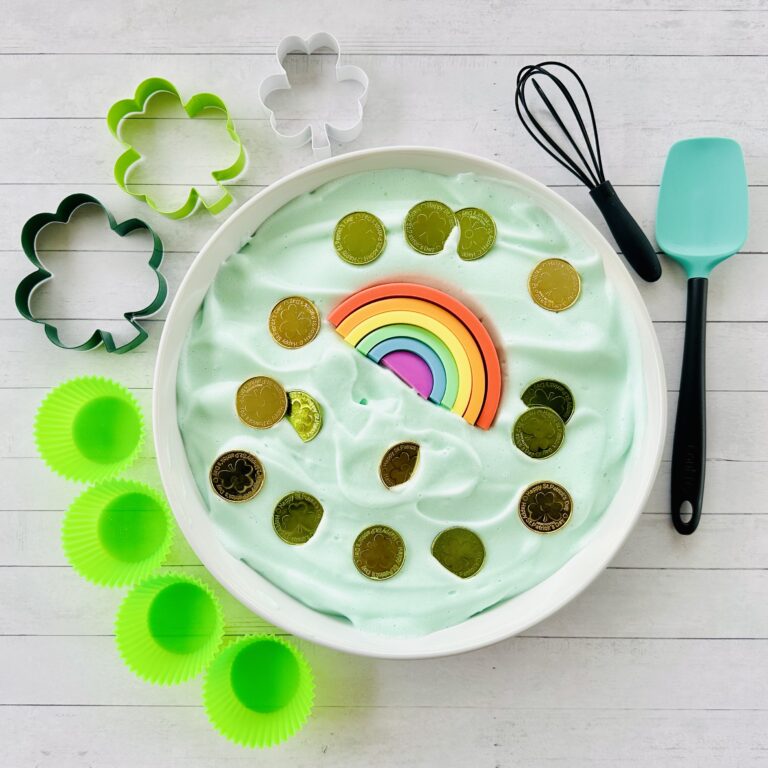What Is Sensory Play And Why Is It Important?
Sensory play isn’t just fun—it’s fundamental to a child’s development. Discover what sensory play is and how it boosts brain development, motor skills, and emotional growth in children. Start your sensory play journey today!

Always supervise children during sensory play. See full disclaimer here. This post may contain affiliate links, which means I may earn a small commission if you make a purchase through these links, at no extra cost to you. As an Amazon Associate, I earn from qualifying purchases. I only recommend products I personally use and love! You can read more about my disclosure policy here.
Sensory play is more than just fun and games—it’s a powerhouse for your child’s development. In fact, 90% of a child’s brain growth happens before the age of 5. That’s huge! And sensory play is one of the most effective ways to support that growth.
Whether it’s squishing playdough or feeling the texture of grass under their toes, these hands-on activities do more than just keep kids entertained. They’re boosting brain connections, strengthening motor skills, and even helping with emotional regulation.
But here’s the best part: sensory activities don’t require fancy tools or complex setups. It’s easy, it’s impactful, and it can seamlessly fit into your daily routine.
In this guide, we’ll dive into why sensory play is so crucial and, more importantly, how you can make it a regular part of your child’s day—without breaking a sweat.
What Is Sensory Play?
Sensory play is any activity that engages your child’s senses—touch, sight, hearing, smell, and taste. But it doesn’t stop there; sensory play activities also involves proprioception (the sense of body position) and the vestibular system (which helps with balance and movement).
Sensory activities are designed to help children interact with and make sense of the world around them, allowing them to learn, grow, and thrive.
Sensory play can be as simple as letting your child splash in the bathtub, play with food, or explore a sensory bin filled with various textures. Whether it’s finger painting, playing with playdough, or just listening to different types of music, sensory activities can be incorporated into your daily routine with ease.
Why Is Sensory Play Important?
Sensory play isn’t just fun—it’s fundamental to a child’s development. Here’s why:
1. Boosts Brain Development: Sensory activities help build nerve connections in the brain’s pathways, facilitating a child’s ability to complete more complex tasks. When children engage in sensory activities, they’re not just playing; they’re helping their brains grow and develop.
2. Supports Cognitive Growth: Activities like asking questions, exploring how things work, and experimenting with different materials all promote cognitive growth. Sensory activities encourage children to solve problems, think critically, and make sense of the world around them.
3. Enhances Language Skills: Sensory activities introduces children to new vocabulary as they learn to describe what they’re doing and how it feels. This experiential learning helps them develop communication skills and enriches their language development.
4. Develops Fine and Gross Motor Skills: Through activities like pouring, mixing, jumping, and crawling, sensory play helps children refine both their fine motor skills (like holding a pen or using scissors) and gross motor skills (like running and jumping).
5. Promotes Social-Emotional Development: Sensory activities can have a calming effect, helping children regulate their emotions. It also fosters social interactions as children play together, learning to share, communicate, and solve problems collaboratively.
6. Encourages Creativity and Independent Thinking: Sensory activities allows children to experiment, imagine, and create without boundaries, fostering independence and creativity.

When Can You Start Sensory Play?
The beauty of sensory play is that it can begin from birth. Infants are already tuned into their senses and are constantly learning from their environment. For example, even the simple act of a baby feeling bubbles pop on their skin during bath time is a form of sensory play.
As your child grows, sensory activities can be adapted to match their developmental stage. Toddlers might enjoy chasing bubbles, while older children can get involved in making their own bubble mixture. There’s no age limit to sensory play—whether your child is a newborn or a preschooler, there are endless ways to engage their senses.
How to Use Sensory Play in Everyday Activities
Incorporating sensory activities into your child’s daily life doesn’t have to be complicated. Here are some practical ideas to get started:
1. Sensory Bins
Create a sensory bin using a plastic bin filled with DIY materials like kinetic sand, cloud dough, dyed rice, dyed pasta, dyed chickpeas, bubble foam, jello, or even water. Add small toys, scoops, or buckets, and let your child explore freely. Sensory bins are great for tactile play, helping children develop fine motor skills as they dig, scoop, and pour. You can switch up the contents of the bin regularly to keep things interesting.
2. Playdough
Playdough is a great tool for building strength in little hands. Squeezing, rolling, and molding playdough helps develop the fine motor skills your child will need for tasks like writing and using scissors. Plus, it’s a fun and calming activity they can enjoy independently or with others.
3. Finger Painting
Let your child get messy and creative with finger painting. It’s an excellent way for them to explore different colors, textures, and patterns using their hands, while also stimulating their tactile senses and encouraging artistic expression.
4. Playing with Food
Yes, playing with food can be a good thing! Letting your child touch, taste, and smell different foods helps them learn about texture and flavor, and it’s also a sensory experience that engages multiple senses at once. For younger children, this can be as simple as letting them squish noodles, like colorful rainbow spaghetti, with their hands.
5. Outdoor Play
Take sensory play outside! The backyard is a treasure trove of sensory experiences—from feeling the grass beneath their feet to hearing the rustle of leaves. Older children can engage in activities like hopscotch, bike riding, or playing in the sandbox, which help develop their proprioception and vestibular senses.
6. Bath Time
Turn bath time into a sensory activity by adding different textures and smells to the water. Bubble baths, scented soaps, and bath toys can all make bath time a more engaging experience. It’s also a great way to calm down before bedtime, as the warm water and soothing scents can help regulate your child’s sensory system.
7. Music and Movement
Listening to music is an easy way to engage your child’s auditory senses. You can also encourage them to move to the rhythm, which helps with balance and coordination. Use household items like pots and wooden spoons to create your own band, allowing your child to explore different sounds and rhythms.

Sensory Play for Children with Sensory Sensitivities
Some children may have sensory sensitivities, where certain textures, sounds, or lights might be overwhelming. Sensory play can be especially beneficial for these children, helping them gradually become more comfortable with different sensory inputs.
It’s important to note that every child is different, and their needs may change over time. The key is to observe your child and adjust sensory activities to suit their comfort level.
Tips for Maximizing Sensory Play
1. Be Creative: Sensory activities doesn’t require expensive toys or materials. Everyday household items can be turned into sensory tools. For instance, use a pillow to add a balance challenge during playtime or try using different textures like sponges or cloths during bath time.
2. Make It Fun: The best sensory activities are the ones that feel like pure fun to your child. Whether it’s a messy finger painting session or a splashing good time in the bath, the goal is to make learning an enjoyable experience.
3. Don’t Overthink It: Sensory play is all around you. The important thing is to let your child explore freely. You don’t need to direct their play—let them lead the way.
4. Adapt to Your Child’s Needs: Pay attention to how your child responds to different sensory activities. If they seem overwhelmed, try something less intense. If they’re enjoying a particular texture or sound, find ways to incorporate more of it into their play.
Final Thoughts
Sensory play is more than just a way to keep your child entertained—it’s a powerful tool for learning and development. By engaging their senses, children develop crucial skills that will serve them throughout their lives.
So, embrace the mess, encourage exploration, and watch as your child discovers the world around them, one sensory experience at a time.
Recommended
- The Best Quiet Fidget Toys And Sensory Tools For The Classroom
- Guide To Sensory Bin Supplies You Need To Have
- How To Dye Rice To Make Rainbow Rice
- How To Dye Pasta Noodles For Sensory Play
- How To Make Rainbow Spaghetti For Sensory Play
- How to Dye Chickpeas for Sensory Play
- How to Make Jello Blocks for Sensory Play
- How To Create Awesome Colorful Bubble Foam






